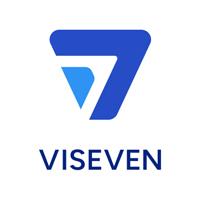How to harmonise global content strategies with local needs in the pharmaceutical market

Any pharma business operating on a global scale would naturally strive to execute a uniformed content marketing strategy across all markets. Yet, their local affiliates often feel frustrated when global marketing teams impose their strategies without consulting them. They want their global counterparts to understand that a cookie-cutter approach will not work for their markets. It just does not meet the expectations of the local audiences.
The difference in expectations makes it challenging for global and local strategies to coexist harmoniously. This brings us to the main question: How can a pharmaceutical brand balance global strategies with local needs? As a CEO at Viseven, a leading MarTech company in pharma and life sciences domains, I would like to share our best practices for helping global companies navigate localisation.
4 strategies to balance global and local expectations
In today’s pharmaceutical industry, localising strategy is not just about adaptation, but about personalisation. Here are some ways life sciences companies can hit the sweet spot between global ambitions and the local market’s demand for a tailored approach:
Define clear roles and responsibilities
The starting point is to clarify roles and responsibilities for content marketing, customer segmentation, and healthcare providers’ (HCPs) expectations. When everyone on the team at every geographic layer understands their tasks and duties, they face fewer challenges and achieve business goals faster.
For instance, is the role of global marketing clearly defined and meeting regional and local marketing expectations? Conversely, is the role of regional marketing defined and delivering the value that global and local marketing expect?
We usually advise our clients to adopt a GloCal approach at this stage. As you might have guessed, “GloCal” combines “global” and “local.” This concept involves global oversight of processes and strategies while allowing a degree of autonomy to local markets.
Defining the RACI matrix, along with the processes and active programmes that will drive collaboration across all relevant layers of the organisation, is crucial for making GloCalisation a reality. This way, content can be personalised to meet the specific needs of local markets while ensuring consistent messaging and brand identity.
Motivate local affiliates
Too often, we plan changes behind closed doors and then create a communication and change management plan to convince the organisation to follow. Contrary to some industry assumptions, I do not believe that professionals in pharma are reluctant to change. In fact, I believe the opposite: the vast majority understand and aspire to more innovations. What they resist is change driven by organisations in a top-down, “take it or leave it” manner, where their local market experience and voice were never considered.
Eventually, this leads to the “not-invented-here" syndrome, when employees undervalue initiatives created without their input. As Guillaume Villard, Head of Primary Sales at Viseven, puts it: "Instead of just informing teammates about the change, involve them in co-creating it." If you emphasise that local teams’ opinions matter, they will feel valued, eager to contribute, and more likely to support these strategies.
Remember that implementing new business strategies is often a lengthy and bumpy road. You must consider ways to ensure local teams stay highly motivated over long periods. One effective tactic to increase employees’ intrinsic motivation is to show them benefits for their specific market, rather than just for the global company.
Gain insights from local teams
Global teams should avoid the “I know it all” attitude when managing local markets. Collaborating with local affiliates is key to effective localisation because it helps identify knowledge gaps. To successfully execute bottom-up activities, it is essential to engage local champions and experts when creating things like:
- Customers segmentation
- Customer profile/persona & expectation
- Marketing (or Medical/MedEd) strategy/plans
- Content strategies, omnichannel campaigns
Companies' headquarters can gain fantastic insights by involving local peers in various ways. This helps brands significantly speed up the implementation of their content strategy and marketing plans.
Leverage a content experience platform
Technology helps pharmaceutical companies reconcile global and local teams’ expectations and implement content strategies without hiccups. Let’s examine how content experience platforms like eWizard can improve this process.
Life science companies can use eWizard to foster centralised cross-functional collaboration, accelerate content time-to-market, and improve result tracking. With the help of technology, global pharma teams can make campaign planning transparent, eliminating the need for local teams to search for or request information.
The content experience platform allows marketers to brief, design, and submit content journey templates for every business objective and demographic. They can also create a wide range of content templates formatted and optimised for different digital channels that local teams can safely use.
If a company implements modular content globally, local teams are also expected to adopt this strategy. Yet, our experience shows that local markets often lack the resources to localise individual modules and prefer adapting entire content assets instead. Therefore, it is unsurprising that, based on our findings, less than 2% of local content is reused, with 80% being created from scratch.
Our platform helps local teams skyrocket content reuse. After localising and approving entire content assets, they can create new modules, add the right metadata, and then automatically localise them.
Set correct key performance indicators (KPIs)
The KPIs defined by your global brand team will not necessarily align with those of your local teams. Thanks to GloCalisation, your local and regional affiliates can adopt tailored performance-tracking approaches to accurately assess whether the new strategies are successful.
For new market entries, it might be worth avoiding using KPIs like conversion. Measuring engagement metrics might be more effective for realistically assessing campaign performance.
Marrying global and local strategies
During localisation, strategies and content should be customised for each local market instead of being fixed. In my experience, many customer-focused and digitally advanced pharma companies adopt the aforementioned “personalisation” strategies and operate like well-oiled machines. This creates exciting opportunities for them.
Specifically, customer experience becomes truly omnichannel, with data collected at every touchpoint. Regional and local teams are provided with the processes, modular content, relevant technologies, and editorial guidelines needed to create and execute local campaigns. Meanwhile, autonomy in decision-making allows them to ensure strategies and content reflect and resonate with the local audience. Sometimes, these local campaigns grow into regional or even global pharma initiatives, demonstrating true bottom-up best practice sharing across markets.
About the author
 Nataliya Andreychuk is the CEO and co-founder of Viseven, a global MarTech services provider for life sciences and pharma industries. She is one of the top experts in digital pharma marketing and digital content implementation and has more than 14 years of solid leadership behind her belt. Andreychuk is among the strongest female leaders in the marketing technology world. She has been contributing her vast expertise to developing smart digital solutions and software, which are now serving clients in over 70 global markets, delivering intelligent, personalised content across channels, platforms, and countries.
Nataliya Andreychuk is the CEO and co-founder of Viseven, a global MarTech services provider for life sciences and pharma industries. She is one of the top experts in digital pharma marketing and digital content implementation and has more than 14 years of solid leadership behind her belt. Andreychuk is among the strongest female leaders in the marketing technology world. She has been contributing her vast expertise to developing smart digital solutions and software, which are now serving clients in over 70 global markets, delivering intelligent, personalised content across channels, platforms, and countries.
About Viseven

Viseven is a future-inspired global MarTech Services Provider for Pharma and Life Sciences industries with more than a decade of experience. Viseven's digital transformation centre offers innovative solutions for companies of different sizes and digital maturity levels by merging marketing and digital technology expertise with innovation and strategic capabilities. The company's solutions, products, and services are actively used by the TOP 100 Pharma and Life Sciences companies in more than 50 countries around the globe.
Follow Viseven on social media:LinkedIn,Twitter,YouTube,Facebook
Follow Nataliya Andreychuk on LinkedIn










